Effective treatment of cat eye infections through the proper administration of drops and ointments is a vital aspect of feline healthcare. Successfully applying these medications necessitates a level of precision and technique that can be challenging for pet owners.
From understanding the correct approach to administering eye drops to implementing strategies to prevent rubbing and ensure the efficacy of the treatment, there are numerous nuances to consider.
By mastering these techniques, pet owners can significantly contribute to the well-being of their beloved feline companions.
Key Takeaways
- Approach cats from behind and hold their chin to administer eye medications effectively.
- Use proper technique to apply drops or ointments without touching the eye.
- Wait between medications, wipe away discharge, and consider an e-collar if needed.
- Seek help if necessary, focus on the lower lid, and ensure the medication reaches the cornea.
Understanding Cat Eye Infections
In veterinary medicine, a comprehensive grasp of the pathology underlying feline ocular infections is imperative for effective diagnosis and treatment. Cat eye infections can arise from various causes, including bacteria, viruses, fungi, or other underlying health issues. Understanding the specific etiology of the infection is crucial in determining the appropriate course of treatment.
Factors such as the cat's age, overall health, and living environment can also influence the development and severity of ocular infections. By closely examining the symptoms present and potentially performing diagnostic tests, veterinarians can tailor their approach to effectively combat the infection and alleviate any discomfort experienced by the feline patient.
Identifying Symptoms in Cats
Early detection of symptoms indicative of eye infections in cats is essential for prompt treatment and management. When observing your cat for potential eye infection symptoms, watch out for signs such as eye discharge, excessive squinting or blinking, conjunctivitis, eye redness, and pawing at the eyes. To help you identify these symptoms more easily, here's a breakdown in a table format:
| Symptom | Description | Action Needed |
|---|---|---|
| Eye Discharge | Clear, yellow, or green discharge | Seek vet advice |
| Excessive Blinking | Frequent squinting or blinking | Monitor closely |
| Conjunctivitis | Inflammation of pink eye tissue | Vet consultation |
| Eye Redness | Redness in and around the eye | Prompt vet visit |
| Pawing at Eyes | Rubbing or scratching eyes | Vet assessment |
Overview of Medication Types
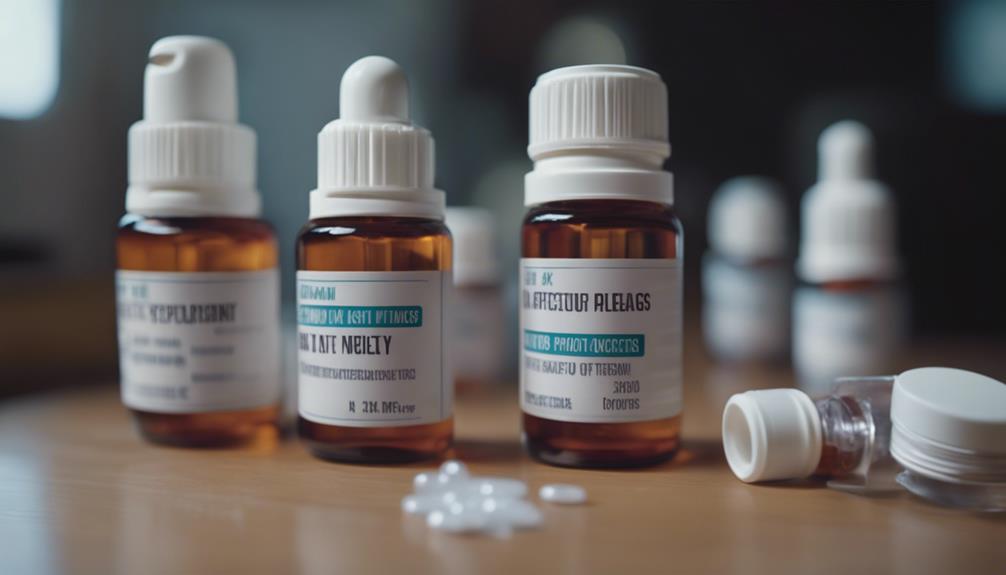
When considering the treatment of cat eye infections, understanding the various types of medications available is crucial for effective management. Different medications serve specific purposes in combating infections in your feline friend's eyes.
Here are some common types of medications used for treating cat eye infections:
- Neomycin, polymyxin B, and bacitracin (or gramicidin) – triple antibiotic (antibacterial)
- Oxytetracycline hydrochloride (Terramycin) – antibacterial
- Gentamicin – antibacterial
- Idoxuridine – antiviral
These medications play a vital role in addressing bacterial or viral causes of eye infections, aiding in your cat's recovery and overall eye health.
Introduction to Eye Drops
Introduction to Eye Drops:
Administering eye drops to cats requires gentle yet precise technique to ensure effective treatment of eye infections. Understanding how to properly administer eye drops is crucial for your cat's health. Below is a helpful table outlining key points to consider when using eye drops for your feline friend:
| Key Points | Description |
|---|---|
| Selecting the correct eye drops | Ensure the drops are prescribed for cats |
| Storage of eye drops | Keep them in a cool, dry place away from sunlight |
| Checking for expiration dates | Do not use expired eye drops |
Step-by-Step Eye Drop Administration
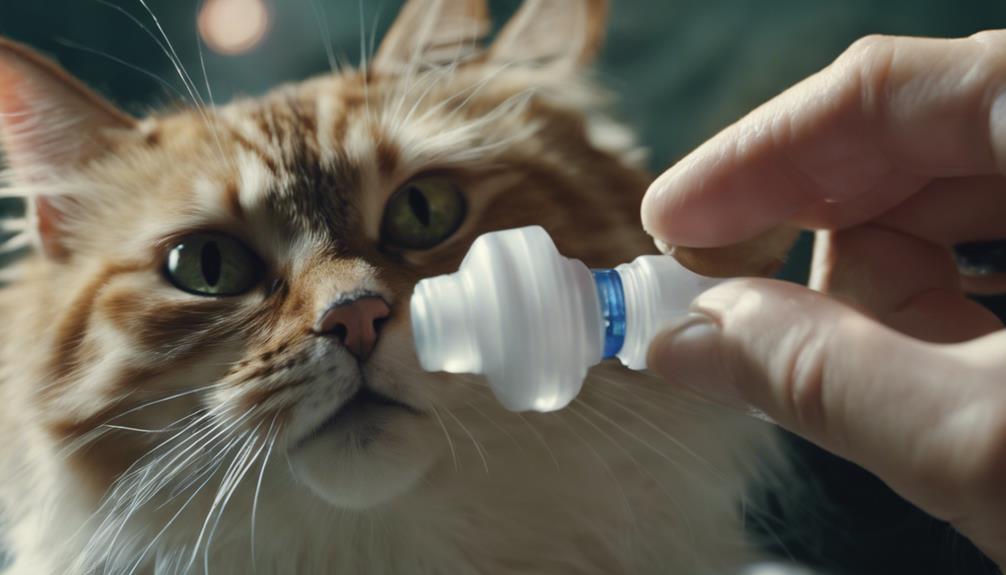
Transitioning from understanding the importance of selecting the correct eye drops and ensuring proper storage to practical application is essential for effectively treating your cat's eye infection. Mastering the step-by-step administration of eye drops is crucial. To ensure success in administering eye drops to your feline friend, follow these steps:
- Approach your cat calmly from behind
- Lift the chin gently to expose the eye
- Pull down the cheek to lower the lid
- Hold the drug applicator steadily and apply the drop without touching the eye
These steps will help you administer the eye drops accurately and ensure your cat receives the necessary treatment for its eye infection.
Exploring Eye Ointments
Exploring the application of eye ointments in feline eye care enhances treatment precision and efficacy. Ointments provide a sustained release of medication, ensuring prolonged contact with the eye surface.
When applying eye ointments to your cat, it is essential to have a steady hand and a calm approach. Place a small strip of ointment along the lower eyelid while gently pulling down the lower lid to help spread the medication over the cornea. This method facilitates proper absorption and distribution of the ointment.
Best Practices for Ointment Application
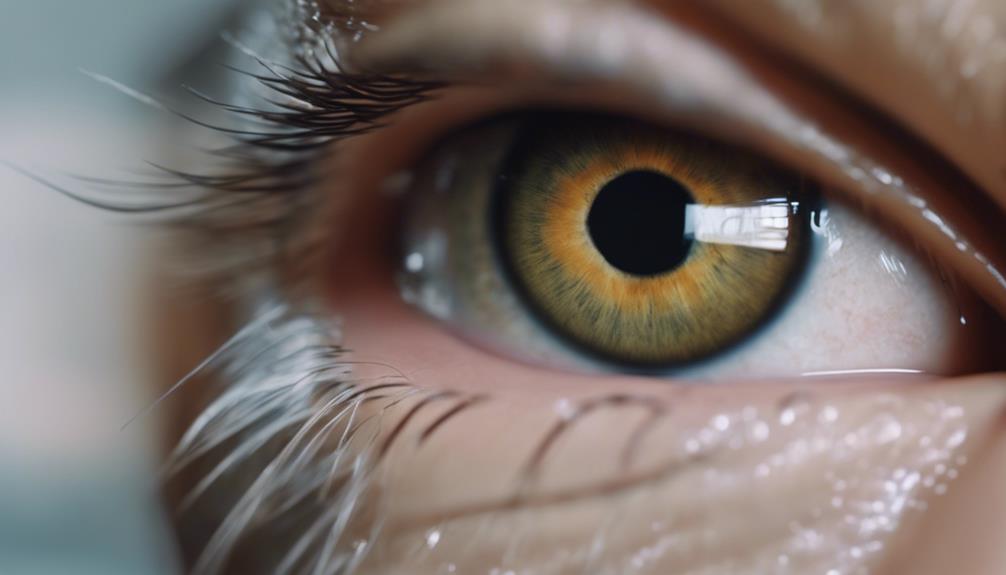
Implementing proper technique is crucial when applying ointments to your cat's eyes for effective treatment of eye infections. To ensure successful ointment application, consider the following best practices:
- Seek Assistance: Enlist help if needed for a smoother process.
- Precise Placement: Place a small strip of ointment into the eye accurately.
- Focus on Lower Lid: Concentrate on lowering the lower lid gently.
- Cornea Coverage: Aim to ensure the medication reaches the cornea effectively.
Additional Tips on Administering Medications
When administering medications to a cat for eye infections, it is essential to maintain a structured approach to ensure effective treatment and minimize discomfort for the feline patient.
To enhance the process, follow the appropriate order of administration and ensure a five-minute interval between each medication. This allows for proper absorption and effectiveness of the prescribed treatment.
Additionally, avoid touching the surface of the eye to prevent contamination and irritation. If your cat has significant eye discharge, gently wipe it away before applying the medication.
Consider using an e-collar if your cat tends to rub their eye frequently, as this can interfere with the healing process.
Sequencing Medication Administration
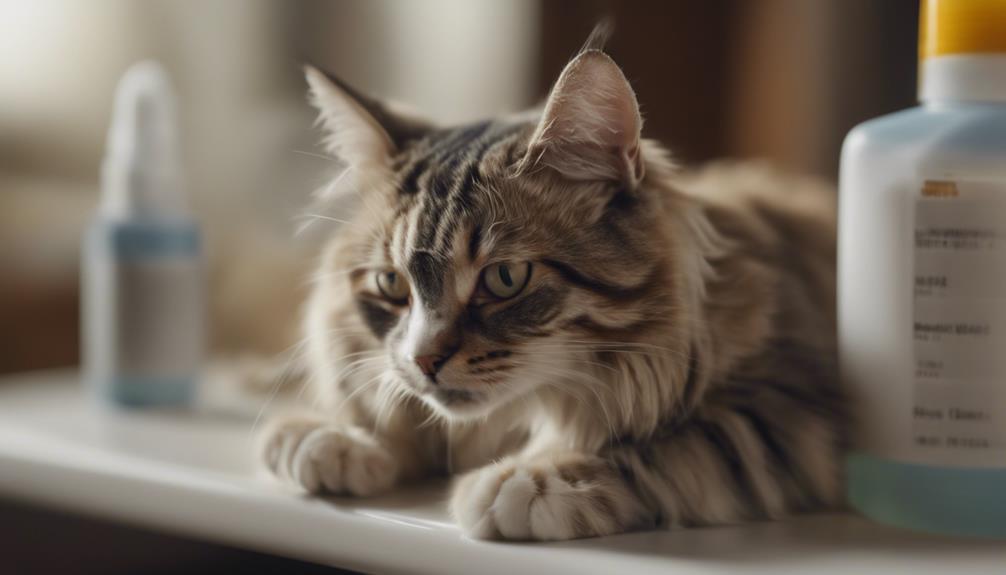
To optimize the efficacy of cat eye infection treatment, a strategic approach to sequencing medication administration is crucial. When administering eye medications to your feline friend, consider the following steps to ensure the best possible outcome:
- Start with antibacterial drops or ointments
- Follow with any antiviral medications prescribed
- Administer any oral medications last
- Finish with any additional treatments recommended by your veterinarian
Importance of Time Gaps
When administering medications for cat eye infections, ensuring appropriate time gaps between each medication is vital to optimize treatment effectiveness and minimize potential adverse reactions. Giving each medication its required time window allows for proper absorption and action without interference from other drugs.
This practice helps to prevent any potential interactions that may reduce the efficacy of the treatment or lead to unwanted side effects. Moreover, spacing out the medications ensures that each one can work efficiently to combat the infection without overwhelming the cat's ocular system.
Managing Eye Discharge and Irritation
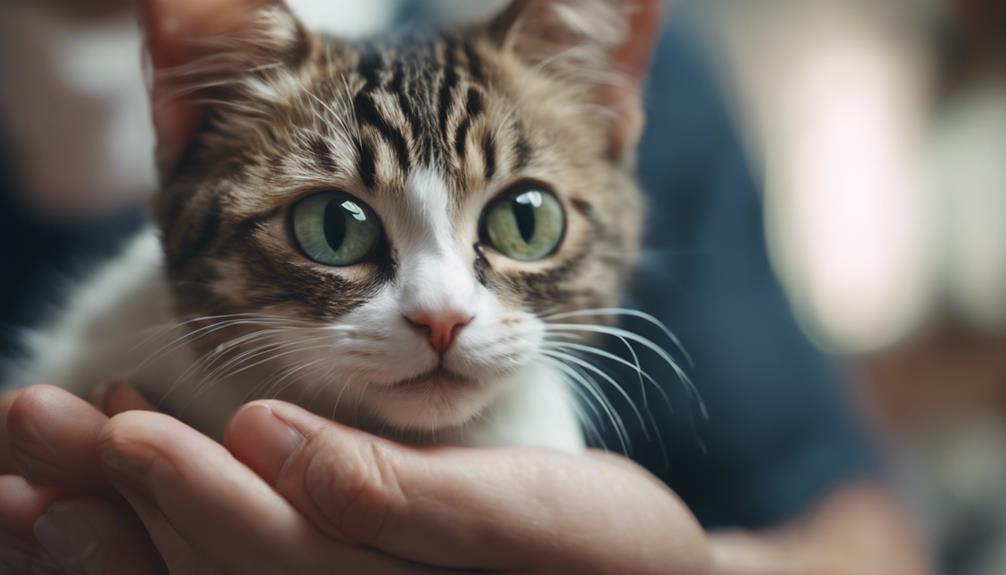
Efficient management of eye discharge and irritation in cats involves implementing targeted treatment strategies to alleviate discomfort and promote healing. To effectively handle these issues, consider the following tips:
- Clean the eye area gently with a damp cloth to remove any discharge buildup.
- Use veterinarian-recommended eye drops or ointments to address the underlying cause of the irritation.
- Monitor your cat for any signs of worsening symptoms such as increased redness or swelling.
- Provide a calm and stress-free environment to help your cat relax during the treatment process.
Frequently Asked Questions
Can Cat Eye Infections Be Contagious to Other Pets or Humans in the Household?
Cat eye infections can be contagious among pets and, rarely, to humans. Bacterial or viral conjunctivitis may spread through direct contact or shared items. Prompt treatment, isolation of infected pets, and good hygiene practices help minimize transmission risks within the household.
Are There Any Natural Remedies or Supplements That Can Help With Cat Eye Infections?
Some natural remedies and supplements may help alleviate cat eye infections. Options like saline solution, chamomile tea, or colloidal silver might offer relief. Consult your veterinarian to ensure safety and efficacy before using any alternative treatments.
How Long Does It Typically Take for Eye Medications to Show Improvement in a Cat's Eye Infection?
Typically, improvement in a cat's eye infection with medications can be observed within a few days to a week. Monitoring closely for changes in symptoms and consulting a veterinarian for any concerns is advisable.
Are There Any Specific Precautions to Take When Administering Eye Medications to a Pregnant or Nursing Cat?
When administering eye medications to a pregnant or nursing cat, consult a veterinarian for guidance on safe options. Avoid drugs contraindicated during pregnancy. Ensure proper application technique, monitoring for adverse effects, and discuss the impact on the cat and offspring.
What Should I Do if My Cat Is Not Showing Any Improvement After Completing a Full Course of Prescribed Eye Medications?
If your cat shows no improvement after completing prescribed eye medications, consult your veterinarian promptly. Further evaluation may be necessary to determine the underlying cause of the lack of response and to explore alternative treatment options for your cat's eye condition.
Conclusion
In conclusion, proper administration of eye drops and ointments is crucial for effectively treating cat eye infections. Understanding the symptoms, medication types, and techniques for administering treatment can ensure the well-being and comfort of feline companions.
By following guidelines and maintaining consistency in medication administration, pet owners can help their cats recover from eye infections and prevent further complications.




